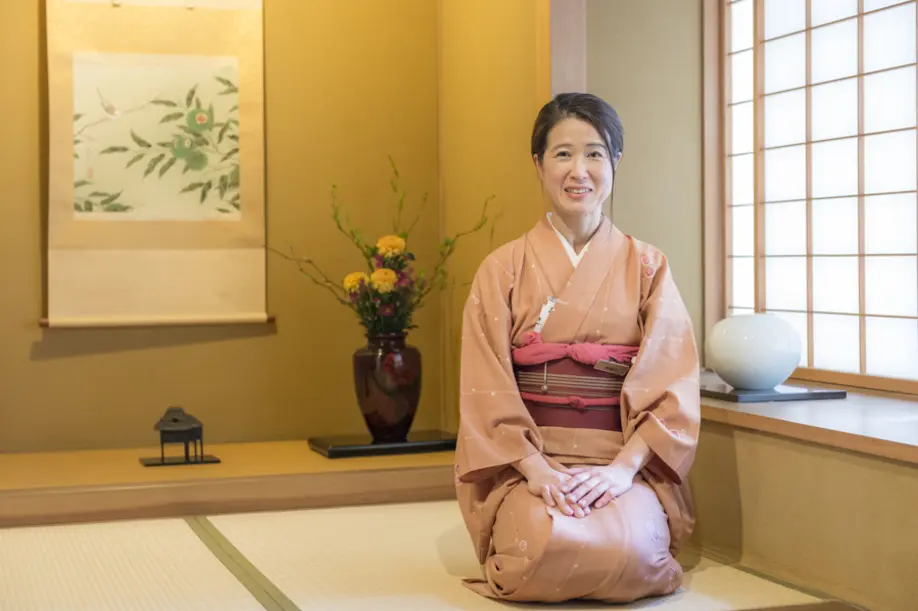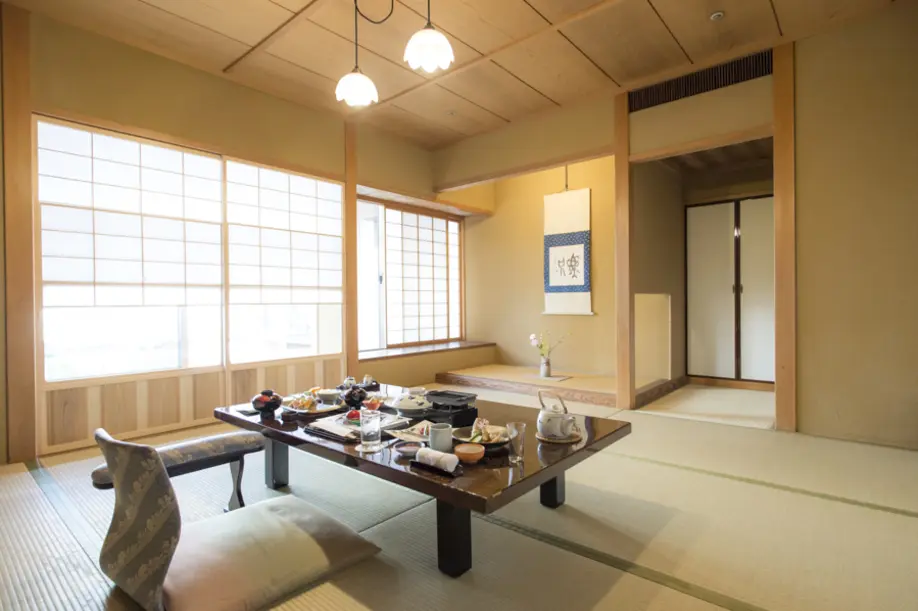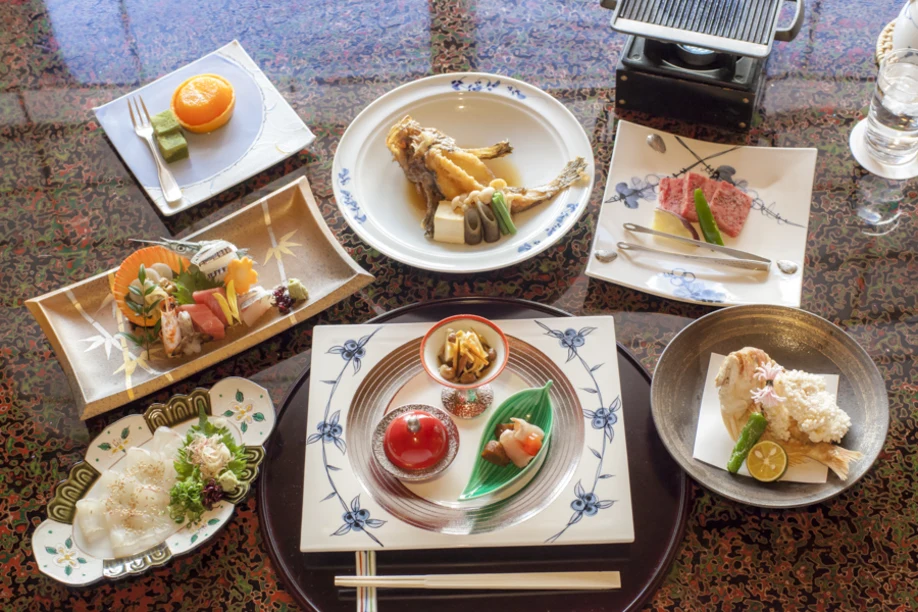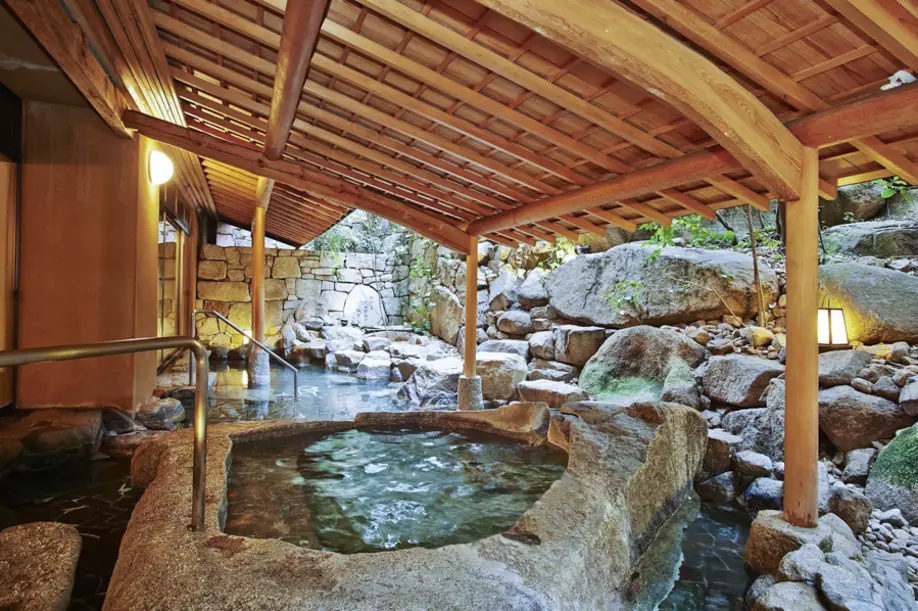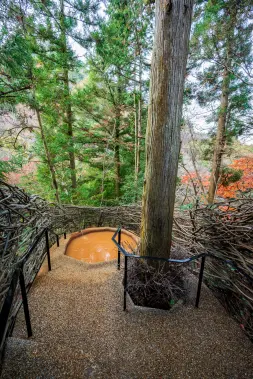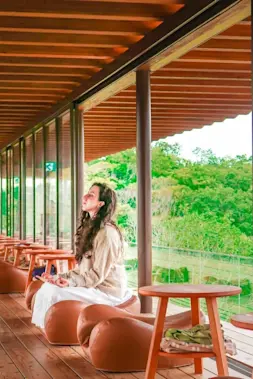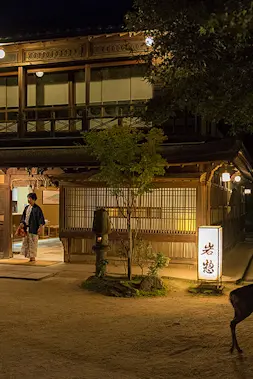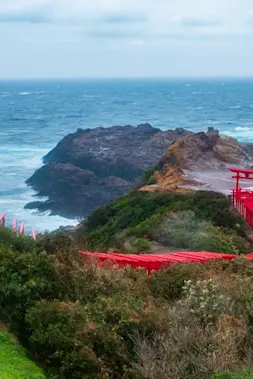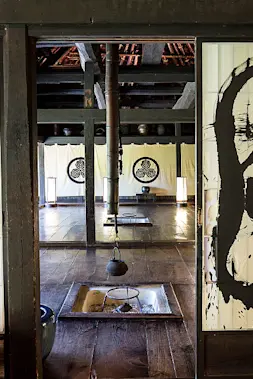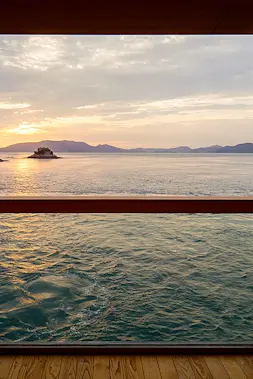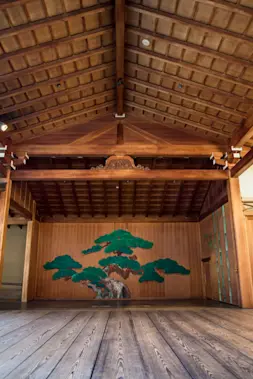Relaxing Stay
Yamatoya Honten - Dogo’s Legendary Ryokan
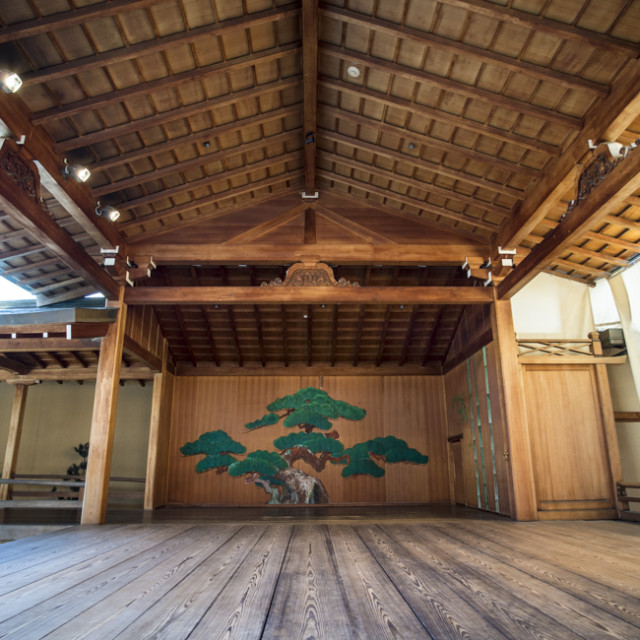
-
- DESTINATION NAME
- Ehime
-
- RELATED TAGS
-
- LAST UPDATED
- 09 January, 2020
“This room is very popular,” says Masato Mizuno, hotel manager at the renowned Yamatoya Honten in Dogo Onsen as he opens the screen doors to room 715. “You won’t see anything like this anywhere else.”
He reveals a room covered in dappled blues, indigos and whites. Even the tatami mats are a dark shade of ultramarine.
“We created this room in collaboration with Mika Ninagawa as part of the art festival Dogo Onsenart,” explains Mizuno.
The furnishings remain in the traditional Japanese ryokan style, but the printed designs and colors are all Mika Ninagawa. The floral patterns resemble her other famous artwork in Dogo – the colorful shoji screen panel designs for the old bathhouse. But something about entering this enclosed space felt different. It felt like stepping inside the mind of the artist.
This artistic collaboration was yet another example of Yamatoya Honten pushing the boundaries, setting it apart from the scores of hotels and ryokans in Matsuyama. Established in 1868 and still owned by the original Okamura family, the Japanese ryokan hotel recently celebrated its 150-year anniversary. You could argue, Yamatoya Honten is as much a feature of Dogo Onsen as the iconic bathhouse.
“We’ve benefited from 150 years of experience at hospitality,” says Mizuno. “Our aim is to provide the perfect service – giving our guests space, but always be within reach to lend assistance.”
Frequently ranked among the best hotels in Japan, let alone the Seto Inland Sea region, with A-list celebrity guests among its regular clientele, the Yamatoya Honten is putting its vast experience to good use.
With 91 rooms, including traditional Japanese ryokan style rooms and 22 western style single rooms, the Yamatoya Honten caters for a range of guests. On most evenings, they also offer guests a spectacle hard to find anywhere else – Noh theater performed on their very own Noh stage.
“Matsuyama City was famous for traditional Noh theater, but the owner realized Noh stages were disappearing in the city. So he constructed Yamatoya’s own Noh stage on the fourth floor of this building,” explains Mizuno. “An expert Noh teacher comes to perform every day and a group of our staff practice and perform for guests in the New Year.”
In an establishment so dedicated to Japanese culture, it’s natural Yamatoya Honten’s Japanese ryokan rooms strictly adhere to Japanese aesthetics. The rooms come without curtains, only paper screens and the walls are made with traditional earthen materials that “allow them to breathe.”
As you might guess, the food and the hot spring baths (both crucial to any Japanese inn worth its salt) are first-class. The waters in the Yamatoya Honten’s hot spring are sourced from the same pump house as the Dogo Onsen bathhouse. Of course, bathing in the old bathhouse is an experience in itself, but bathing at the Yamatoya Honten is ideal for anyone looking to soak in a quieter and more lavish setting.
The ryokan prides itself on its cuisine. So much so, they employ three separate head chefs for their Japanese, French, and Chinese cooking.
I opted for the Japanese ‘Kocho’ course – a full kaiseki course menu made with some of the finest and freshest ingredients around. The menu changes every month to accommodate the shift in the seasonal ingredients.
My meal included an assorted sashimi course with fresh fish from the Seto Inland Sea and a braised stonefish prepared to perfection. The portions of wagyu beef I cooked on the miniature grill were exquisite and melted in my mouth.
Traditionally, a simple course of rice, miso soup and pickles arrive at the end of a kaiseki meal. At the Yamatoya Honten, they tweaked this course by serving hyuga meshi – a traditional dish from Ehime Prefecture where you dip slices of sea bream sashimi in raw egg and soy sauce before eating it on steaming hot rice. A perfect end to a perfect meal.
With its hospitality, luxurious rooms, outstanding cuisine, combined with the healing spring waters of Dogo, Yamatoya Honten is tailored to make every stay as relaxing and memorable as possible. Even the checkout time is an hour later than usual, allowing guests a more relaxed departure.
Photographs & Text by Tom Miyagawa Coulton
RELATED DESTINATION
Ehime
The Ehime area has the Nishiseto Expressway, one of Japan’s leading cycling roads, and the area draws attention from cyclists around the world. Ehime contains many places where visitors can encounter history, including Dogo Onsen, a hot spring with a history stretching back some 3,000 years, and the streetscapes of Uchiko, which still look like they did the Edo and Meiji periods.


























